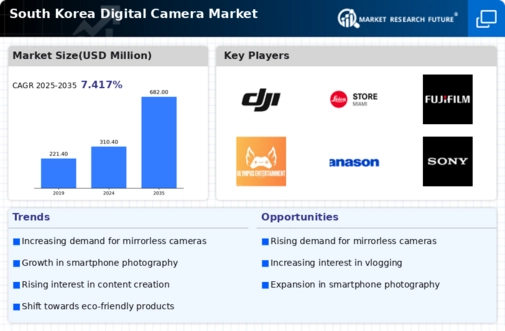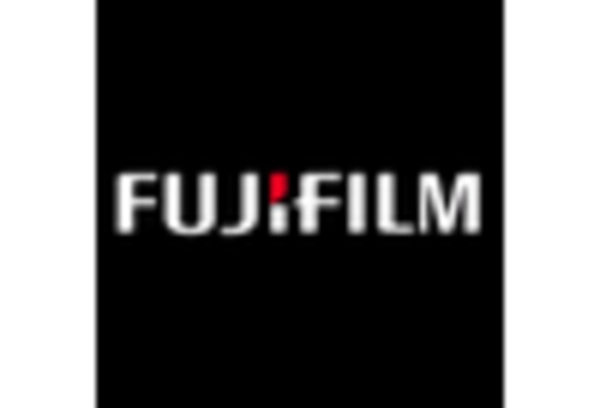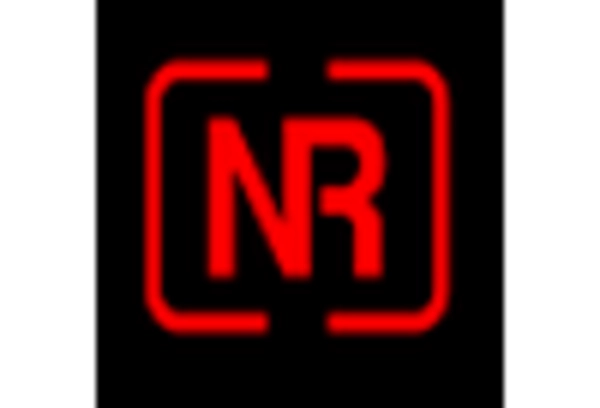Growth of Content Creation and Vlogging
The digital camera market in South Korea is significantly influenced by the burgeoning content creation and vlogging culture. With the rise of platforms such as YouTube and Instagram, individuals are increasingly investing in high-quality cameras to produce engaging content. This trend has led to a marked increase in the sales of compact and mirrorless cameras, which are favored for their portability and video capabilities. Recent market data suggests that the segment catering to vloggers has expanded by approximately 30% over the past year. As a result, manufacturers are focusing on features that appeal to this demographic, such as enhanced autofocus systems, built-in stabilization, and user-friendly interfaces. The digital camera market is thus evolving to meet the needs of content creators, ensuring that they have access to tools that facilitate high-quality production.
Rising Demand for High-Resolution Imaging
The digital camera market in South Korea experiences a notable increase in demand for high-resolution imaging capabilities. As consumers become more discerning about image quality, manufacturers are responding by developing cameras with higher megapixel counts and advanced sensor technologies. This trend is particularly evident in the professional segment, where cameras with resolutions exceeding 30 MP are gaining traction. The market data indicates that sales of high-resolution cameras have surged by approximately 25% in the last year alone. This rising demand is driven by both amateur and professional photographers seeking to capture detailed images for various applications, including commercial photography and social media content creation. Consequently, the digital camera market is adapting to these preferences by prioritizing innovations that enhance image quality and overall performance.
Shift Towards Hybrid Photography Solutions
The digital camera market in South Korea is experiencing a shift towards hybrid photography solutions that cater to both still photography and videography. As the lines between photography and videography continue to blur, consumers are increasingly seeking cameras that can perform well in both domains. This trend is evident in the rising popularity of cameras that offer interchangeable lenses and advanced video features. Market data suggests that hybrid cameras have seen a sales increase of approximately 35% over the past year, indicating a strong consumer preference for versatile equipment. The digital camera market is thus adapting to this demand by developing products that meet the needs of both photographers and videographers, ensuring that users can achieve high-quality results regardless of their chosen medium.
Increased Interest in Photography Education
The digital camera market in South Korea is witnessing a surge in interest related to photography education. As more individuals seek to enhance their skills, photography workshops and online courses are becoming increasingly popular. This growing interest is driving demand for entry-level and mid-range cameras, as aspiring photographers look for affordable yet capable options to practice their craft. Recent market analysis indicates that sales of entry-level cameras have increased by approximately 20% in the last year, reflecting this trend. The digital camera market is thus benefiting from a new generation of photographers who are eager to learn and invest in quality equipment. This educational focus not only stimulates camera sales but also fosters a community of enthusiasts who contribute to the overall growth of the market.
Technological Advancements in Camera Features
Technological advancements play a crucial role in shaping the digital camera market in South Korea. Innovations such as improved autofocus systems, enhanced low-light performance, and advanced connectivity options are becoming standard features in new camera models. The integration of features like 4K video recording and Wi-Fi connectivity has made cameras more appealing to tech-savvy consumers. Market data indicates that approximately 40% of new camera models released in the past year include these advanced features, reflecting a shift towards more versatile and user-friendly devices. This trend suggests that the digital camera market is not only responding to consumer demands but also pushing the boundaries of what is possible in imaging technology. As a result, consumers are more likely to invest in cameras that offer cutting-edge capabilities.
















Leave a Comment